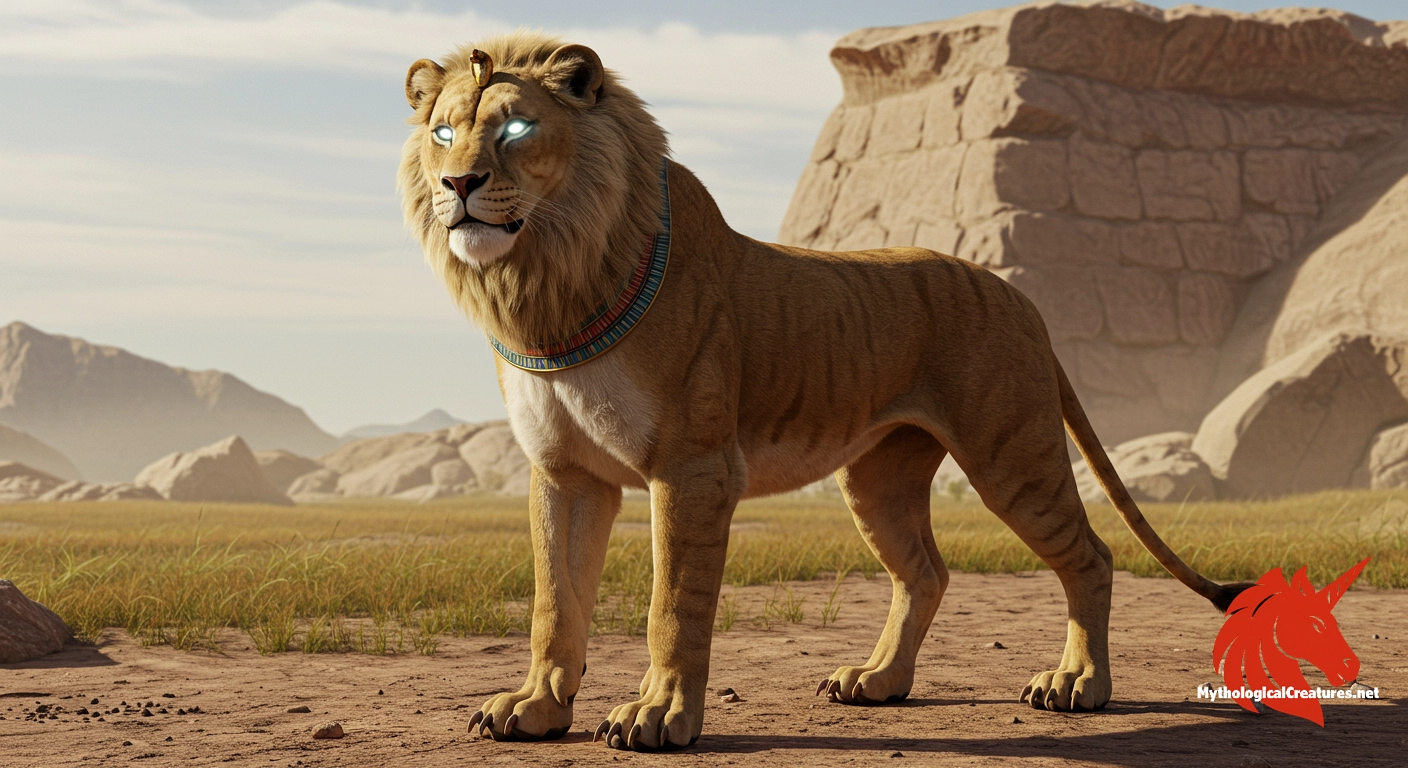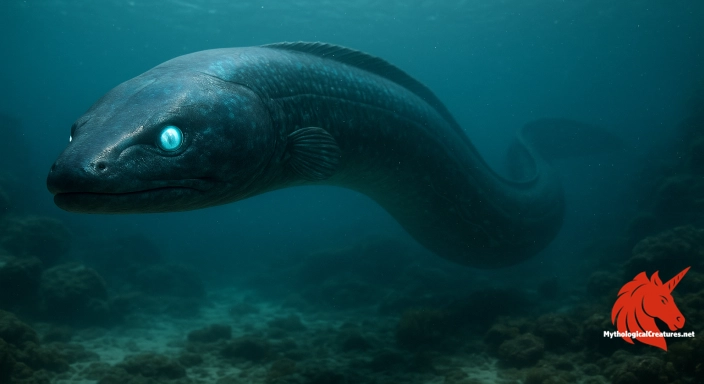Shesmetet: Shesmetet is an ancient Egyptian goddess featured in the Pyramid Texts, revered as the mother of the deceased.

Shesmetet
Shesmetet - Shesmetet is a significant maternal figure in Egyptian funerary traditions, blending lion imagery with royal regalia to emphasize both protection and ferocity in the transition to the afterlife.
Origins & First Encounters
Shesmetet emerges as a fascinating figure in the ancient Egyptian pantheon, embodying both nurturing aspects and fierce protective qualities. Her origins can be traced back to the early funerary traditions represented in the Pyramid Texts, where she is revered as the mother of the deceased. She carries a distinct identity that is both intimately linked with the rituals of death and the promise of renewal. The goddess is credited with a unique blend of maternal care and a lion’s ferocity, setting her apart from many other deities. Her iconography is enriched by the depiction of a lion or a woman with a lion’s head, hinting at an inherent power that commands respect. The epithet "Lady of Punt" subtly points to an African connection, suggesting influences or origins outside the mainstream Egyptian mythos. Shesmetet’s name, deriving from a decorative sash encrusted with beads, underscores her association with regalia and divine authority. Over time, she has come to represent the dual nature of protection and the transformative journey of the soul in the afterlife.
Source Texts & Tale Variants
Ancient inscriptions and funerary texts provide the primary sources that attest to Shesmetet’s significance in Egypt’s religious landscape. The Pyramid Texts serve as the earliest documented mention, establishing her role within the sacred narrative of life after death. In these texts, she is intricately associated with the protection of the deceased and is portrayed as a nurturing mother figure. Additional hieroglyphic evidence found on tomb walls and in ritual artefacts supports her identity and iconography. Variants of her myth appear in different funerary traditions, each emphasising her maternal qualities and her association with the celestial realm. Some interpretations consider her a variant of the fierce lion-headed deities, while others maintain her distinctiveness through the epithet used in her ritualistic context. The references to her in these sources are interwoven with symbols of power and rebirth, reaffirming her role in ensuring safe passage into the afterlife. Although details may vary among texts, the recurrent themes in her portrayal underscore the enduring importance of her legacy in ancient Egyptian spirituality.
Form & Powers
In artistic representations, Shesmetet is depicted either as a majestic lion or a woman possessing a lion’s head, both of which convey her formidable strength and maternal tenderness. Her lion form is characterised by a powerful build, a flowing mane, and an austere gaze that reflects her role as a fierce guardian. When rendered as a woman, she retains subtle animal features such as sharp eyes and a regal posture, suggesting both human intelligence and animal instinct. The ornamentation of her form, notably the shesmet—an elaborate sash adorned with beads—adds a layer of ceremony and divine elegance to her portrayal. This decorative motif is often associated with the regalia of Old Kingdom rulers and further amplifies her connection to royalty and the divine order. Variations in size and posture across different periods highlight the evolution of artistic styles yet always emphasise her commanding presence. Her hybrid appearance serves to bridge the realms of human and animal, illustrating a complex identity that transcends the ordinary. Through these detailed depictions, Shesmetet is immortalised as both a symbol of maternal care and an embodiment of the unyielding force necessary to guard the journey of the soul.
Regional Faces
Shesmetet’s representation adapts intriguingly to the cultural nuances of various regions within and beyond ancient Egypt. In the core areas of Egypt, her identity is typically interwoven with funerary traditions, underscoring her role as a nurturing protector in the passage to the afterlife. However, the epithet “Lady of Punt” reveals a fascinating dimension that ties her to regions in the Horn of Africa, where distinctive rituals and local artistic traditions may have influenced her iconography. In these locales, aspects of her character are sometimes celebrated with greater emphasis on the fertility and abundance of life, reflecting the vibrant culture of the Punt region. Local artistic interpretations tend to blend indigenous motifs with Egyptian symbols, further enriching her portrayal. Regional variations also show that while some communities conflate her image with deities like Sekhmet or Bastet, others insist on her separate identity based on her unique epithets and attributes. This adaptation across regions underscores the fluidity of myth and the ways in which deities evolve to meet local spiritual needs. Her diverse regional representations continue to illustrate the dynamic interplay between local culture, trade routes, and the broader religious framework of ancient Egypt.
Cultural Parallels
A comparative examination of Shesmetet reveals a fascinating interplay of themes that recur in various mythological traditions across cultures. Her duality as both a nurturing mother and a formidable, lion-like guardian can be seen reflected in other ancient deities who blend protective and regenerative qualities. While she shows clear parallels to lion-headed goddesses like Sekhmet within the Egyptian tradition, her distinctly maternal role reminds one of nurturing earth and fertility goddesses in other pantheons. This synthesis of fierce and caring aspects is echoed in certain West African and even Mesopotamian deities, where the symbolism of the lion emphasises strength and regality. The motif of an animal-headed guardian is common in global mythologies, yet Shesmetet stands out due to her specific connection with the afterlife and the transformative journey of the soul. Her iconography, especially the incorporation of the shesmet sash, also resonates with the adornments of royal and divine figures in different cultures. Such cross-cultural comparisons shine a light on the potential interplay between Egyptian religious beliefs and African influences, particularly given the epithet “Lady of Punt.” Ultimately, her story contributes to a broader understanding of how ancient peoples used blended symbols to articulate complex ideas of protection, life, death, and rebirth.
Legacy & Modern Evolution
The legacy of Shesmetet has undergone a significant transformation from her early depictions in ancient texts to modern reinterpretations in art and literature. Originally crafted as a guardian figure in the context of burial rituals, she has gradually come to symbolise the enduring strength found in maternal protection and the transformative power of the divine. Over centuries, her image merged with that of other lion-headed goddesses, yet modern scholarship continually works to reclaim her unique identity, particularly highlighting the distinct aspects of her African origin. Contemporary artworks and exhibitions often reference her bejeweled sash and lion head as emblems of resilience and the cyclical nature of life. Scholars and cultural historians now appreciate her as part of a broader narrative that celebrates the intersection between Egyptian and African spiritual traditions. Modern interpretations frequently explore her role as a bridging figure between the ferocity necessary for survival and the gentle nurturing required for regeneration. Her enduring relevance is evident in how she continues to inspire discussions on the roles of maternal deities and the symbolism of animal forms in mythology. Shesmetet’s historical evolution stands as a testament to the enduring influence of ancient myth on contemporary understandings of spirituality and cultural identity.
Interesting Fact
An interesting aspect of Shesmetet is how her name, derived from a beaded sash, not only signifies royal adornment but also reinforces her role as a divine protector bridging the earthly and the spiritual realms in ancient Egypt.
Quick Creature Info
Origin:
Features:
Associations:
Our Mythic Legendary Rating:

Also Sometimes Known As:
Habitat:
Supernatural Powers:
Physical Attributes:
Abilities:
Behavior:
Lore:
References
Discover Another Mythical Legend You May Not Have Heard Of?
Uncover the mysteries of ancient folklore and expand your knowledge of legendary beings from cultures around the world.
Dare to Meet the Abaia....
Curated by the Mythological Creatures Team (rev. May 2025)
